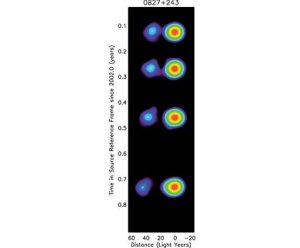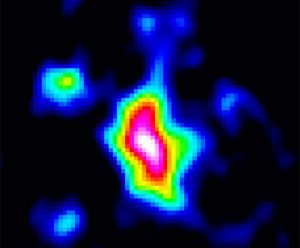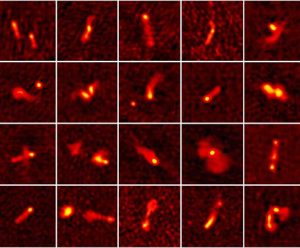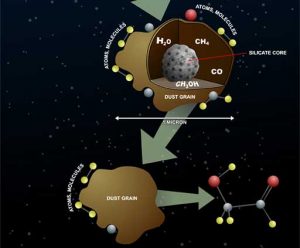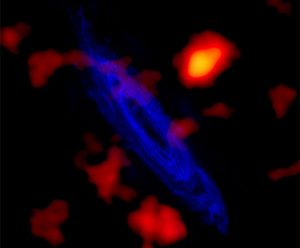Astronomers using the National Science Foundation’s Very Long Baseline Array have discovered jets of plasma blasted from the cores of distant galaxies at speeds within one-tenth of one percent of the speed of light, placing these plasma jets among the fastest objects yet seen in the Universe.
VLA Study Offers Clue to Galaxy Formation
Astronomers using the National Science Foundation’s Very Large Array radio telescope to study the most distant known quasar have found a tantalizing clue that may answer a longstanding cosmic chicken-and-egg question.
Sky Survey Provides New Radio View of Universe
Astronomers using the National Science Foundation’s Very Large Array have overcome longstanding technical hurdles to map the sky at little-explored radio frequencies that may provide a tantalizing look deep into the early Universe.
Cold Sugar in Space Provides Clue to the Molecular Origin of Life
Astronomers using the National Science Foundation’s giant Green Bank Telescope have discovered a frigid reservoir of simple sugar molecules in a cloud of gas and dust some 26,000 light-years away, near the center of our Milky Way Galaxy.
Scientists Discover Two New Interstellar Molecules
A team of scientists using the National Science Foundation’s Green Bank Telescope has discovered two new molecules in an interstellar cloud near the center of the Milky Way Galaxy.
Galactic Building Blocks Seen Swarming Around Andromeda
Green Bank, WV – A team of astronomers using the National Science Foundation’s Green Bank Telescope has made the first conclusive detection of what appear to be the leftover building blocks of galaxy formation — neutral hydrogen clouds — swarming around the Andromeda Galaxy, the nearest large spiral galaxy to the Milky Way.






